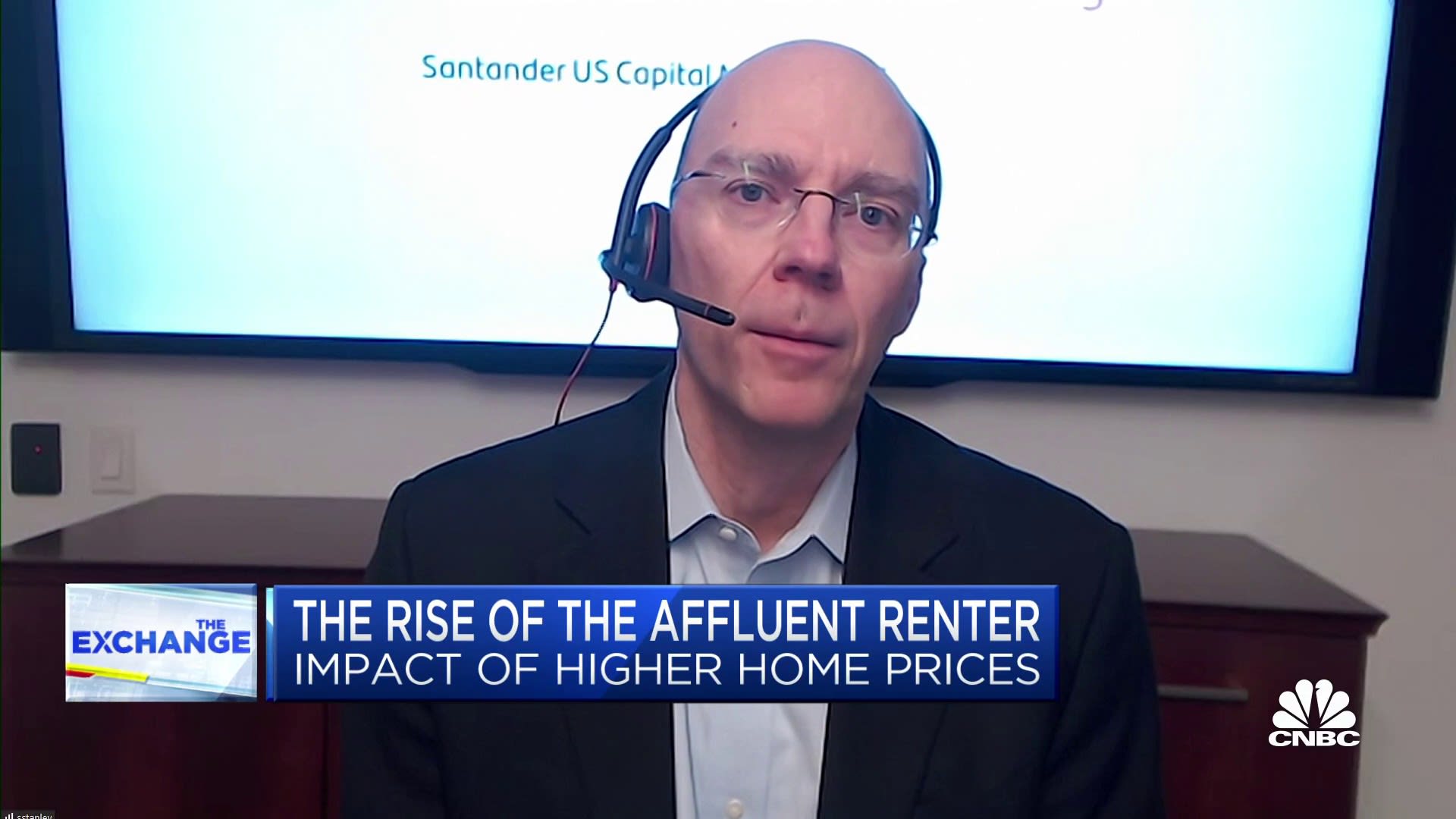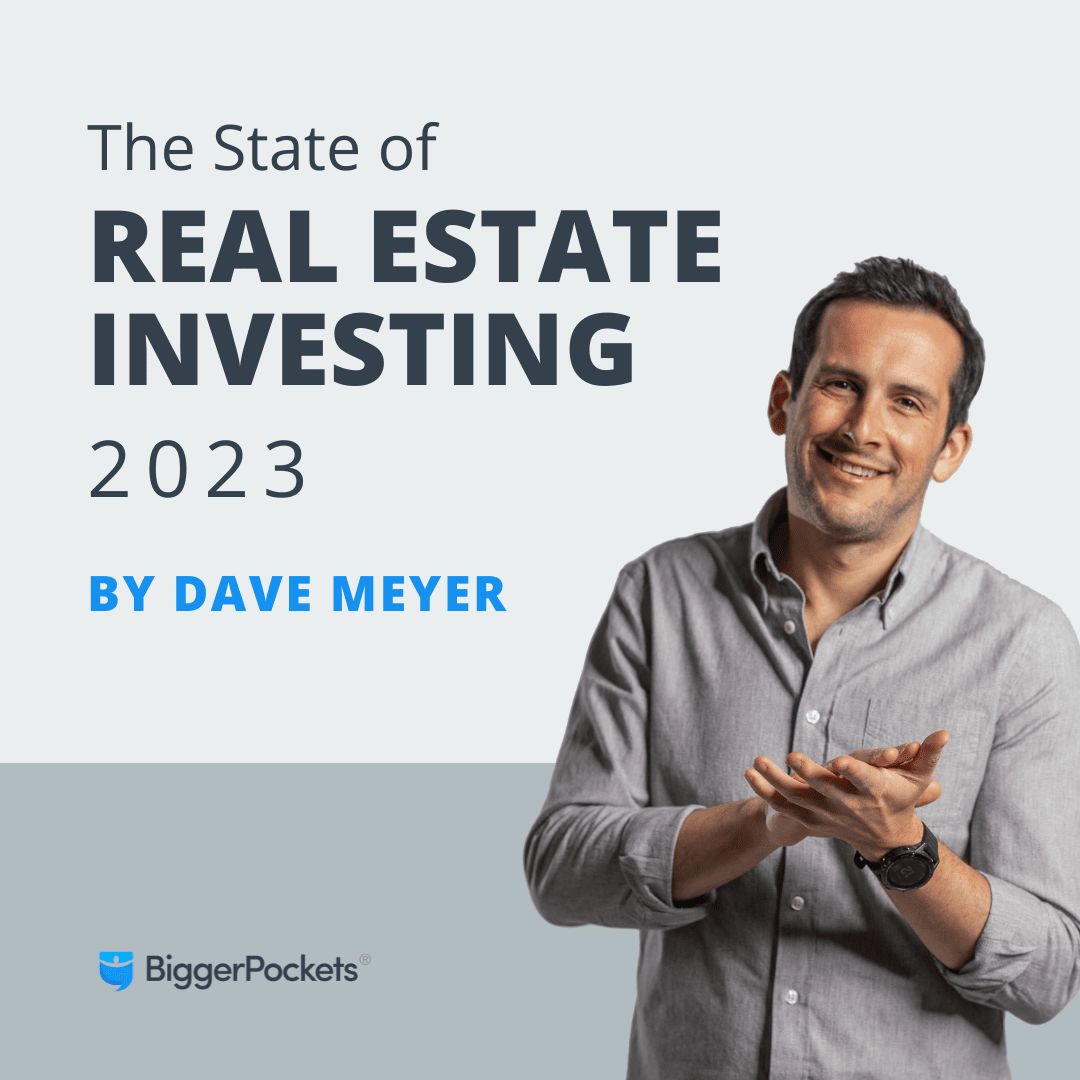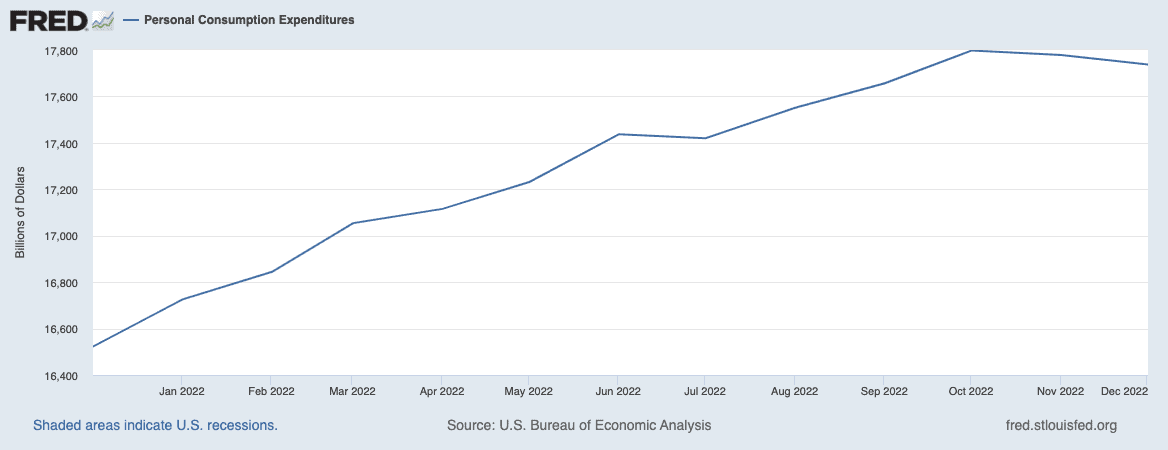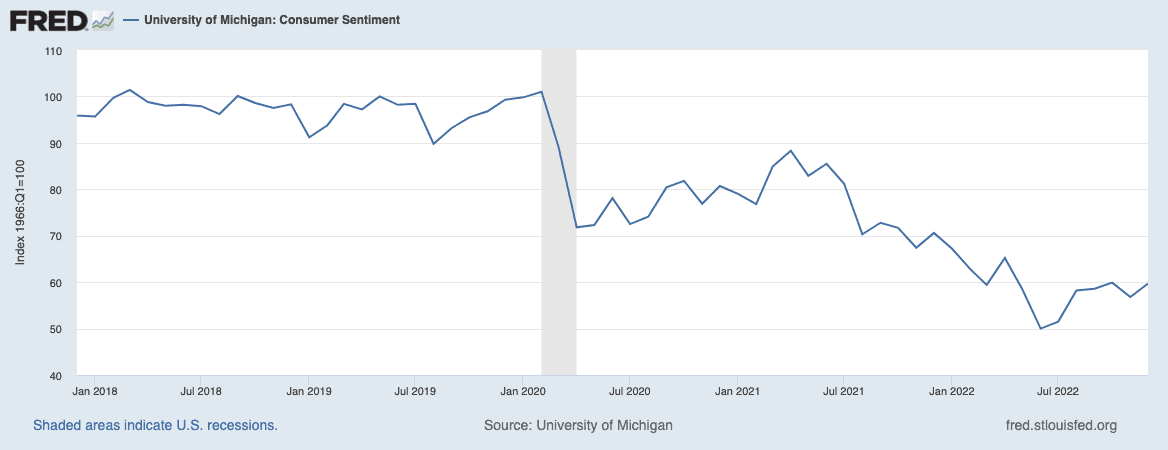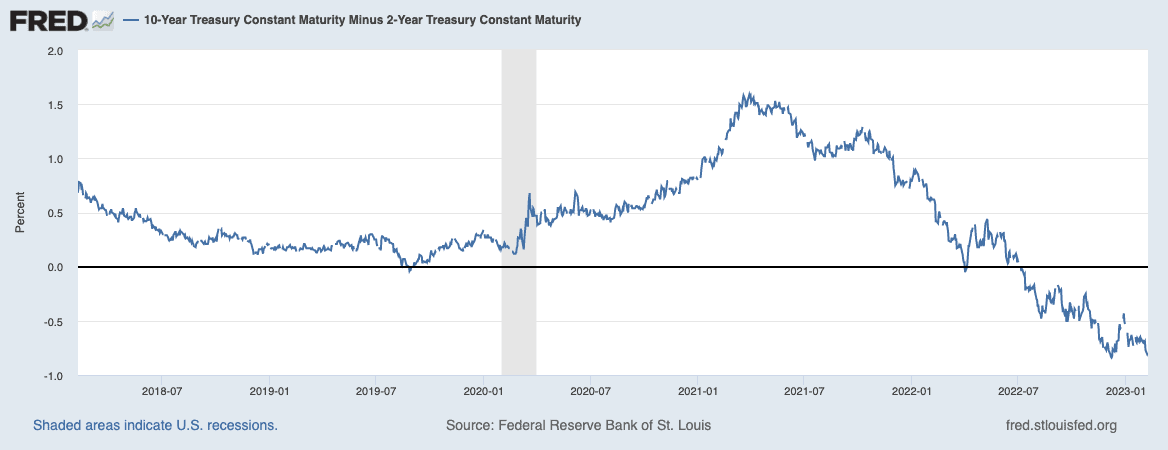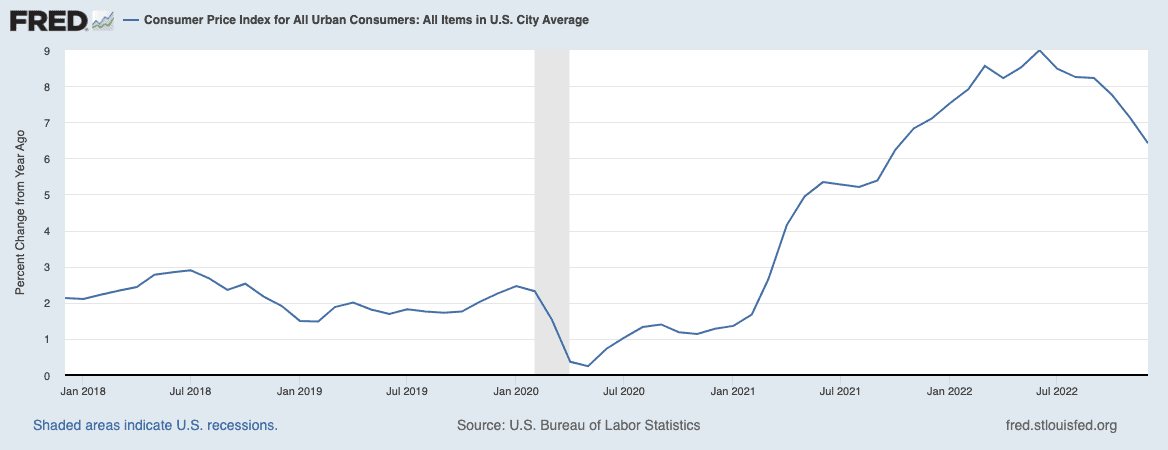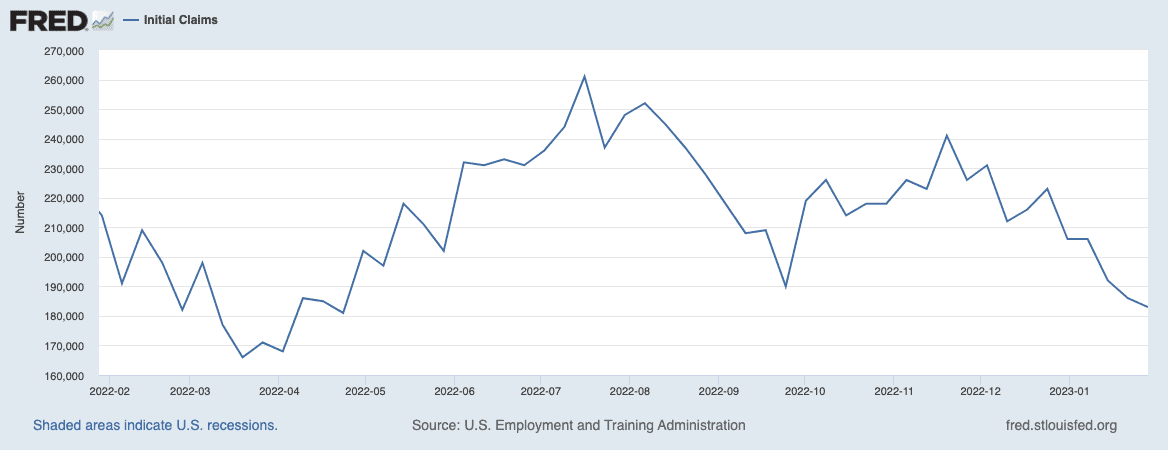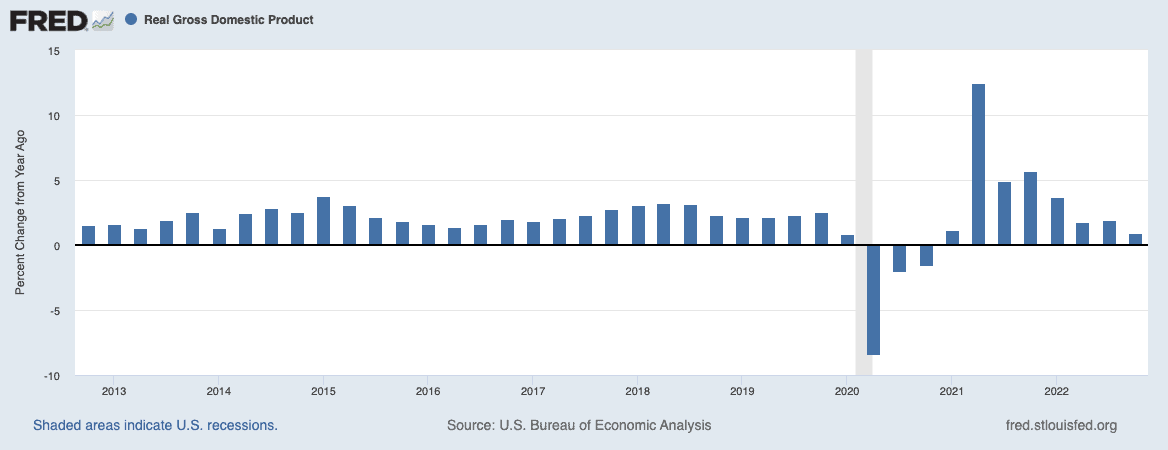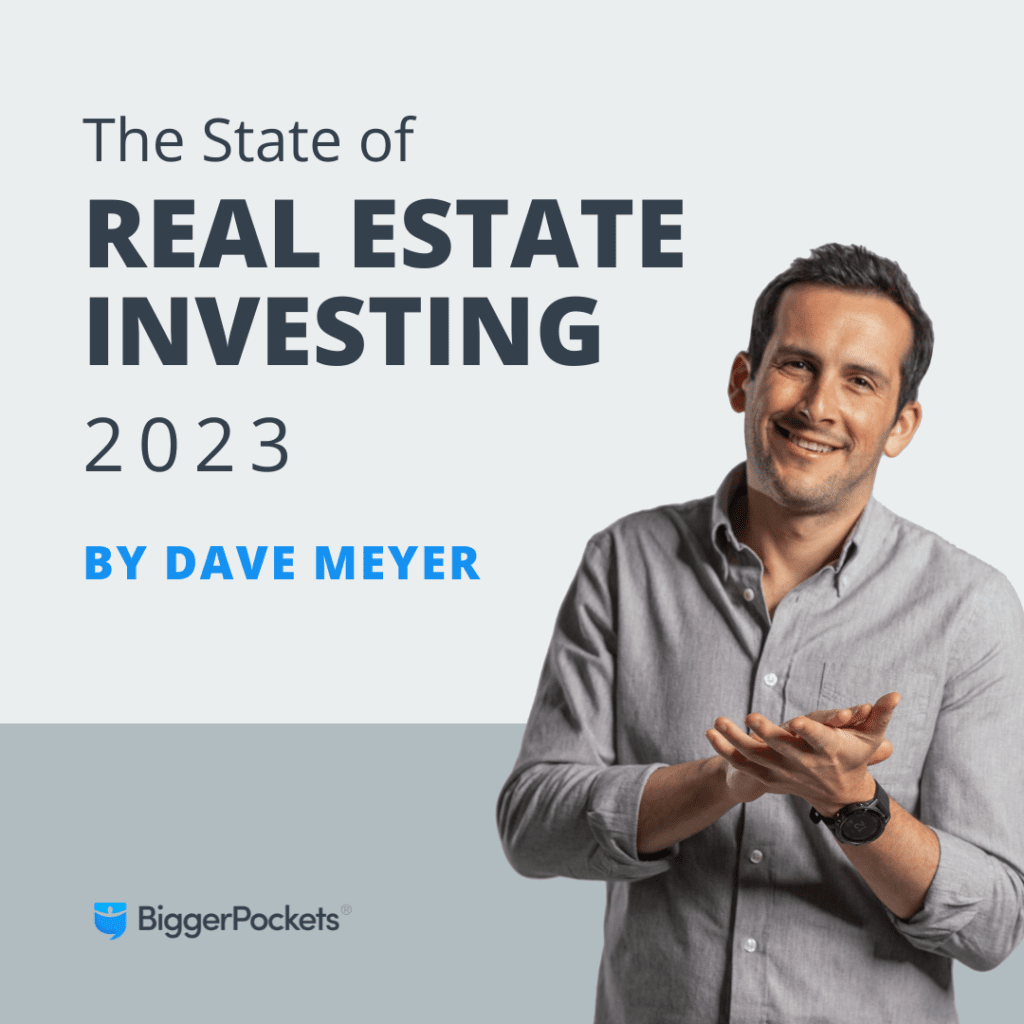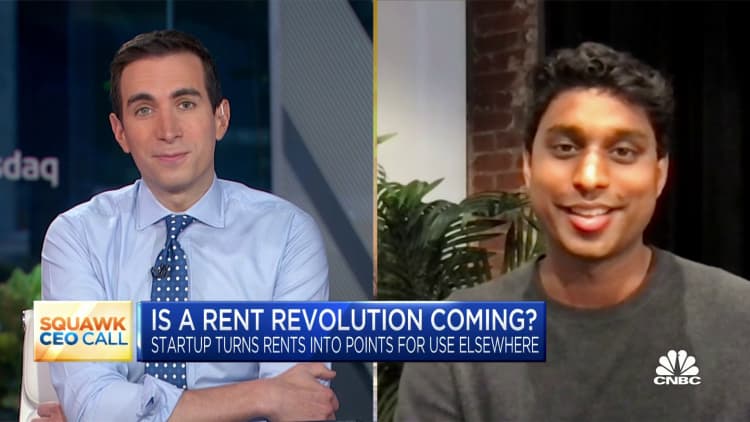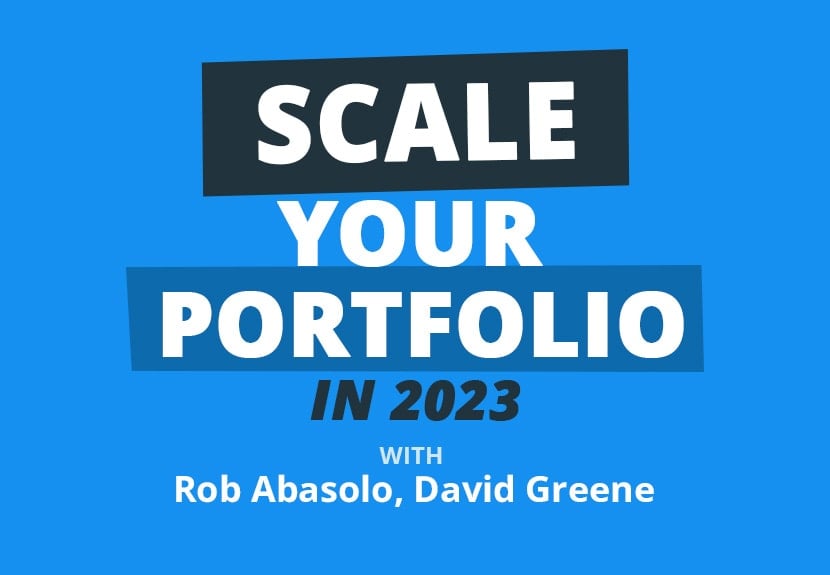David:
This is the BiggerPockets Podcast show 724.
If you don’t learn lead, you never get to scale. You will always be managing the people that you have leveraged. You will have a high paying enterprise that is probably doing very well financially, but you are still very much involved in. When you get to leadership, you actually are able to influence large amounts of people over shorter amounts of time. You can scale to something like what Chick-fil-A has or you can scale to something like what Ken McElroy has with his real estate portfolio. You can get really good at whatever it is you’re doing and do it and mass if you can learn the skill of leadership.
What’s going on everyone? This is David Greene, your host of the BiggerPockets Real Estate Podcast here with a special episode for you today where I get to talk more. In today’s episode, Rob is actually interviewing me about scaling a business. Rob, I’m going to hand it over to you.
Rob:
That’s right. We interview you, thy David Greene, the titular host of the BiggerPockets podcast. Man, I’m excited. Like I said, the roles are reverse. I got this pseudo power, I had all this pressure to succeed. But I’m excited, dude. This was a really good episode where I feel this is a masterclass on scaling. We talk about so many good things for people that are really at that level where I guess they can’t get to that next level, they can’t expand their portfolio and we really dig through a lot of the concepts that might help people do that, right? We talk about your three dimensions of success, which break down to learning how to do your job, leveraging other people and leading. This is really, to me, the golden nugget of the day. So I’m excited for people’s mind to be unlocked on air today. What was some of your favorite parts?
David:
Well, everyone listening to a podcast like this, you and I, because we listen to our own shows, the goal is to make more money, have more success, have a better life than what we have right now. It’s very simple. A lot of us have that drive to get there, but we don’t have a direction of understanding how to do it. Or what’s even worse, we don’t understand the factors that are working against us in trying to accomplish it, which just leads to frustration and shame and guilt and this feeling like you could be doing more. So in today’s show, we’re really trying to get deeper into what stops people from having more success as well as layout a clearer path of step one, step two, step three, what it takes to start learning something and then what the next step is and then the next step is. Some of my favorite parts was your commentary. I thought you were very funny today and you did a very good job getting stuff out of me that other people don’t.
Rob:
That’s right, man. Well, it’s always really fun to get into your mind because I’m always exposing how unorganized and not where I want to be. So this is a very inspirational episode. So we’ll get into it here, but before we do, today’s quick, quick, quick tip is brought to you by David Greene.
David:
Today’s quick tip is, if you’re having a hard time figuring out why you’re not making more progress in real estate investing, in business, in anything, it might be because you’re taking the wrong path. Start asking yourself the question of what feels heavy and what feels light. Typically the things in life that we are good at, that we have skills, that fate has blessed us with doing feel light, we don’t mind doing them. And the stuff that we are not good at that we should be leveraging out to other people feels heavy and we can’t stand it. I noticed this is often the case with very seemingly insignificant tasks that I just put off forever because I hate them. Those are the first things that should be leveraged out. Rob, what do you think?
Rob:
I got a bonus quick, quick, quick tip, and that is to pre-order your newest book, David, SCALE. If you pre-order it before February 16th, you’ll actually be entered to win one of 10 seats on a coaching call with you, David Greene, right?
David:
That is right. And a little bonus there, if you order all three of your books and the Top-Producing Agent’s series SOLD, SKILL, and SCALE on the BiggerPockets bookstore, you’ll also get a free month of your exclusive Wealth building Mastermind, which is just like the craziest deal of all times. So if you guys want to be entered in to get all those good bonuses, head over to biggerpockets.com/scale right now and use code SCALE724 for 10% off of checkout. Remember, that’s SCALE724. And if you stick it around until the very end of the episode, you’ll understand why we chose that promo code.
Very good. Rob, you’re getting much better at these intros.
Rob:
It’s called a callback. I read it on Wikipedia. I think it’s supposed to be important.
David:
All right, well let’s get into it.
Rob:
David Greene, you have written five books with nearly 500,000 copies sold. That’s a lot of investors and agents here helping. You’re also the titular host of the BiggerPockets podcast, the biggest real estate podcast in the world. We know you, but David, who are you and why are you here today?
David:
Well, that’s the first time I’ve ever been called titular, I can say that. Well done.
Rob:
I’m pretty sure I used that correctly. I honestly don’t know.
David:
I mean it sounded intriguing at least. People are Googling right now, like how do you spell that and what does that mean. We should let you host more often. You’re going to come out big words like this.
Rob:
That’s my SAT word of the day right there.
David:
Who am I? I am much more like our average listener than I am like your average influencer. So I was a blue collar guy. I started working in restaurants when I was young. I went to college, didn’t know what I wanted to do, got a psychology degree. My very last year in college, I switched to a criminal justice minor, ended up getting into law enforcement. Did that for a while. Kind of saw how negative the relationship between law enforcement and the public was going. Realized I didn’t want to do that until I was 50. Started investing in real estate.
I had just been really good at saving money for a long time and then I started learning how to invest that money. Caught a wave of inflation that really helped with rising rents and increasing property values. Learned strategies like the BRRRR method and long distance real estate investing. Built myself some wealth, became a millionaire through real estate and didn’t even know it until I was around like 30 years old when I actually started to track my net worth and then said, “Okay, this was really hard to figure all this out. Let me start writing books for other people to teach them how to do it.” So I got out of law enforcement, became a real estate agent, learned the hard way how to just make money being an agent at all. Then I became a top producing agent. So I was the top in the office and I was one of the top in the country. And then I built a team to take over the agent business I had called the David Greene team and I wrote three books for BiggerPockets on those.
So I’ve written SOLD, SKILL, and now this newest book, SCALE, which is teaching real estate agents how to be good at their job. And then we mentioned the BRRRR book and Long-Distance Real Estate Investing.
Rob:
I’m glad you clarified that because initially we were talking about I thought this book SCALE was about how to scale a fish and turns out not that I was like, “Wow, that’s a big pivot, David.”
David:
You know what’s funny, a big part of the SCALE format is comparing fish, catching the fish, cleaning actually within business. That is an analogy I rely on heavily in the book. So it’s funny that you came up with that.
Rob:
So I’m not completely off. We’ll, we’ll get to that analogy a little bit later because I’ve heard you talk about it. That’s always a really good one. But tell us, how does it fit in with your other two books? Because you have written a couple of books here. Is this sort of the final one? Is there more in the series? Is this the culmination of your grand catalog of books?
David:
Not of books, but for the top producer series with BiggerPockets that was written for real estate agents it is. So the dirty secret in my opinion, subjectively speaking in real estate sales, is that most agents are terrible. I don’t think it’s that big of a secret because you hardly ever find a person who says, “My agent crushed it.” Even the best agents, you’re frustrated the whole time. Just it’s hard to be good at it. People don’t understand what the industry is like as a real estate agent. It’s not really architected or engineered to be beneficial for both parties. So it turns into a much more adversarial relationship with the investors or the clients and the real estate agents that it should be.
So the book SOLD was written just to teach agents what I wish that when I had had a broker that would’ve told me. No one tells you how to start a business, how to work a database, what scripts to use, what your job is. They don’t tell you how to use the MLS, they don’t explain anything. Let me tell you how to open a lockbox, you got to figure it all out. So SOLD is written just for the new agents who aren’t making money and don’t know why. That’s just to get you profitable.
SKILL was written for the agent who knows how to be an agent but wants to become elite. They want to be a top producer, they want to make good money. No one becomes an agent to just make average money. You just keep your W2 job if that was the case. So SKILL is all about excelling at your job, delivering a really good listing presentation, having a buyer’s presentation, how to talk to clients, understanding what I call the sales funnel, which is the five steps of taking a person and leading them down a process of becoming a lead and then a client, and then an escrow and then a closing, and the actual work you’re doing in between every step to just give some direction and doing really well.
And then SCALE was written for the person who wants to take a job they’ve become very good at and turn it into a business. And at that point, you can either turn it into semi passive income, much like owning investment property. You own a business and other people are doing the work and you are managing that business. Or, scale it huge. Now that I’m not having to actually write the contracts and talk on the phone to the buyers, I can open up expansion teams in different parts of the country. That was probably the most fun book to write because the principles in this apply to not just real estate agents, but to business owners everywhere including real estate investors.
Rob:
Yeah, I’m excited. We’re going to dive into your writing process a little bit and actually ask you a little bit of the nuts and bolts of what it’s like to be such a prolific writer. But before we get into all that, I do want to ask, I know that you are a man of many businesses. You’re a renaissance man of real estate, you got a brokerage, you’ve got an agent team. The book may seem like it’s framed for agents, but knowing you and how you are so prolific with your metaphors, I just wanted to ask, how are we going to tie this to investors who don’t care about scaling their agent business? There are other people that this applies to, I’d imagine, right?
David:
Yes, it’s absolutely true. The reality here is I only learned how to create a real estate agent team out of a job using the principles that I had done with my portfolio. So long before I had ever created a real estate agent business, I had created an investment portfolio that is a form of owning a business. Being a real estate investor is being a business person. You are gaining assets that produce income. You’re trying to control expenses. Instead of looking for clients, you’re looking for properties. You’re constantly leveraging the workout and trying to find a better team. You’re looking for better property managers. You’re looking for better lenders, you’re looking for better loan opportunities. You’re looking for better locations to invest in, for better agents to help you, for better handymen.
So much of our lives, like for you, focusing in short term rentals is controlling expenses and controlling the customer experience and trying to systemize the things that come up a lot without handing complete control over to another human being that can run it into the ground without you seeing it. You could call it a game, you could call it a challenge. There’s different words to use there, but it’s a pattern that pops up in any form of business. If you’re Alex Hormozi and you’re starting gyms, if you’re Rob Abasolo and you’re buying short-term rental properties or running courses to teach people how to do it, or you’re David Greene starting a mortgage company or buying my own rental properties, these patterns reappear over and over and over, and the books are written to help the people who are just starting to get into this to recognize the pattern when it first comes and get a head start on creating a process to systemize these challenges that come up so that you can run a profitable business.
Rob:
Business. Yeah, I think one of the things I’ve learned over the past couple years is that without systems, scaling is effectively impossible. Or I guess, scaling efficiently cannot be done without systems, right?
David:
That’s absolutely true. If you don’t understand how to implement systems, and then the next step is actually make the step forward to fail at it. No one starts a system and immediately has the perfect system on the first try. Nothing in life works that way, but yet that stops a lot of people from doing it because they know they can do it better themselves and if they do it with someone else. If you don’t do that, you never get to the point where you can own more than a handful of rental properties.
So take you as a short-term rental investor, I’m a short-term rental investor. Actually, this is a really good analogy. If you’re someone who starts off like you did Rob and you’re managing them yourself, full-time, you quit your job, you don’t have a family, the ideal situation, how many of those suckers can you effectively manage at one time in a portfolio?
Rob:
Five to 15.
David:
Right? There you go. Depending on the area.
Rob:
How good you are.
David:
Depending the guest is and how good you are, right?
Rob:
Yeah.
David:
But even then, if it’s just you, even 15, if you have no help, no admin help, you just have software and you, it’d be very difficult to manage 15 short-term rentals, coordinating all the cleaners yourself, not having any form of administrative support. To do a good job, you’ll probably capped somewhere at that, like five. A stud could maybe do 15, right? So you cannot scale if you do things yourself.
When I bought mine, I had watched the process that you were going through and that other people had went through, and I just said, “I’m never going to manage these. I’m going to hire a property manager right off the bat to deal with this type of stuff.” And I put a strategy together to accumulate them in a way that I could rely on property management to run it effectively. You can’t just leverage any property to a property manager and trust they’re going to do a good job. The location, the asset type, the type of tenant that’s going to be visiting the property manager themselves, they all go into this.
So I was able to buy about… I have 12 functioning short-term rentals right now that I forget exists most of the time unless I’m talking to the bookkeeper and looking at the numbers right out the gate versus the process that someone else who doesn’t understand business scaling would have to go through. It would maybe take years of managing it themselves, trying to get someone else involved, failing, trying again, buying too many, selling a couple off. It’s this very slow process to get to the point where what they want is financial freedom in a big portfolio.
Rob:
Yeah. Yeah. Well, let’s just dive into a system really fast because I think we say this word a lot. We say systems, processes, and automations quite a bit on the podcast. I think a lot of people probably just who… There’s like two types of people, right? The really organized type A person and then there’s like the creative, everything floats in the ether kind of thing. So for me, when I hear system I freeze up because I’m like, “Ugh.” But it’s really not that complicated of a concept, right? So what exactly is a system as you define it?
David:
A system is made up of two pieces, and I talk about this in SCALE. Everyone gets the first one and then they mess up on the second piece. This is why people have a hard time with systems. The first thing that makes up a system is an order of tasks or a checklist of things that need to be done. It’s that simple. So if I’m selling a house, a system would be a list of all the tasks involved in getting a listing. First I guess it would start with getting the listing presentation ready for the client. And then once the listing agreement is signed, there’s a process of getting the house ready for the market. And then once it’s on the market, there’s a series of tasks for keeping the seller updated and marketing the property to buyers. And then when it goes into escrow, there is a series of tasks involved with completing all the paperwork, negotiating and bringing it to close.
Okay. So there’s like four steps to the system of selling a house. Every single thing in business has a series of repeatable steps. If you owned a restaurant, I could outline for you the system involved with what the cooks are doing to cook the food, who’s ordering the food, the waiters have a process of how they’re supposed to put the order in and make sure it goes to the table and bring the customer their check. It’s a series of tasks that are repeated all the time.
The second piece to a system is what everyone gets wrong. Most of us understand we need to write out all the tasks that are involved in the job. The second part is having a person that can execute it with skill. What I see is people make the task and they hand it to an admin who doesn’t have skill in that area and it all falls apart and they say, “Yeah, systems don’t work.” When you’re the person doing it, you’re usually doing it well, which is why if you have a series of tasks and you then follow them, you’re your own system. In order to scale, you have to take those two pieces and you have to bring other people in to do the job. And that’s what I found the challenge in business has been.
I’m very good at outlying a series of operations that need to be done. I’m very good at anticipating where things will go wrong and even putting training in place to prepare, but it doesn’t matter if I don’t find a person who’s good at accomplishing those tasks. You actually still have to be good at things in life if you want to be successful. And that’s the second part of a system.
Rob:
Yeah, man, you really nailed that on the head. I mean, it’s two things, right? It’s delegation of this kind of written out system you talked about, but it’s also some level of management is still needed to that person because a lot of the times people tend to empower employees too much at the very beginning and they sort of leave. They come back and then they get mad that the employee failed, but there was no oversight to make sure that the system was perfected.
David:
Yeah, and that the person who was working through the system understood the importance of it. So let’s say for you, you own an Airbnb, you’re managing it yourself and you get a customer who’s unhappy because the hot water isn’t coming out of the shower, okay? You are not just thinking your job is to get the hot water turned on. That’s how a person who’s not taking responsibility thinks.
A person who is taking responsibility thinks, “My job is to make the client happy so they leave a good review when they come back. And a part of that is getting the hot water turned on, but that my responsibility is to not just solve a problem or check a box, it is to achieve a result.” And that’s the best way I can describe what responsibility within business looks like. If you take the approach of, “My job is to accomplish a result, to find a cash flowing property, to add equity to a property, to keep a guest happy, to increase rents,” you take a much different approach than when you’re just working off a series of checklists where the client calls and says the hot water’s not working.
Well, you call the handyman, they go out there, they fix a thing, you check the box, you pat yourself on the back and you say, “Hey, I did my job.” But you don’t ever talk to the client, you don’t apologize, you don’t see how they’re feeling, you don’t dig in. And then they leave a one-star review and the employee says, “Well, not my fault. Not my problem. It’s not my house. I did my job.” That is what’s hard about scaling, is you have to have, it’s funny, a system in place to check the people that are working your system, and you have to make sure that their heart is in the right place so that they are perceiving their responsibilities with the same level of responsibility that you as the owner would have.
Rob:
Yeah, so effectively you’re basically saying you want your employees to not look at things so binary, so black and white. There has to be a little bit of, I guess compassion or empathy for the employer or for the owner of that business to make sure, I don’t know, that your vision is being executed correctly, right?
David:
Yeah, they have to care. They have to give a crap would be another way to put it, because the person visiting your Airbnb isn’t going to think, “Well, this was an amazing experience except for the hot water. That’s only chalked up due to one employee that works at the company. I’m not going to punish the owner by leaving a one-star review because of one bad apple.” All they know is they’re not happy and they want to let everybody else know, “Don’t stay in this place because you might have a similar experience.”
A lot of the advice I’m writing about in books like SCALE is for the person working in a company that wants to get ahead, that wants to own their own business someday, or wants to make more money within that business and they don’t understand the power of responsibility. Every business owner out there has given us a hallelujah amen as they’re listening to this, right? Every person who’s an employee might be baffled or confused. So many human beings have come under this delusion that avoiding responsibility is winning. I don’t know that our industry as real estate investors has done much to help. There might have even been… It might hurt it because a lot of the time real estate investing gets sold as the alternative to hard work, the alternative to working for the man and being a slave for someone else. It paints this picture that if you get out of that world and you come into this one, you just buy a couple houses and you’re done, you can do whatever you want. It’s actually the opposite.
Responsibility increases when you take over the asset that you’ve invested your money into. It is more pressure that is on you to perform better at this job. And the best way that people can prepare for making more wealth themselves is to take on additional responsibility where they’re at. It’s kind of like adding more weight to the bar when you’re working out. Building up your strength, learning how the systems work, not just what your job is to do, but why your boss put that system in place, what problem they’re trying to solve. Understanding that will equip you way better when you start building your own portfolio, you start buying your own houses, you got to take the call from the unhappy guest and you realize, “Oh, there’s more to this than just getting that water turned back on.”
Rob:
Sure. Yeah. Well, I think that begs a really important question, right? Obviously knowing your strengths are important, but knowing your weaknesses is probably even more important. So how do you evaluate that as someone that’s looking to scale in the real estate business?
David:
Understanding your weaknesses is the biggest thing. So your weaknesses not only will… We tend to look at that and think, “Well, that’s where I’m going to make mistakes.” That is true, but that’s not the most dangerous thing in a weakness. Your subconscious is very aware of your weaknesses even if your conscious isn’t. And so what happens is we will avoid putting ourselves in situations that we know will expose a weakness even if putting ourself in that situation might be very profitable.
So if you’re a human being who knows I haven’t really done enough research on this topic like I should have and you’re invited to speak at a meetup, that might be very beneficial to your business, you’re going to get all the eyeballs on you. You’re going to opportunity to teach the people what you do. Let’s say that you’re a loan officer, that’s a chance you could pick up some clients that you could close loans for and make money. But you’re not paying attention to what’s going on in the market. You’re just checking boxes for someone else working a system they made and you’re not actually making an effort to learn how the whole process works. You will have an insecurity that comes from your weakness of not having enough knowledge. And what will happen is you’ll decline the invitations to speak at the meetup and you won’t ever realize how much money you lost by not taking action.
We always notice the money that we lose that was already ours. Something goes wrong, you got to fork over a guest another five grand. It sucks. You hate that. But you never realize the money that you could have made had you taken more action or been more decisive or had more confidence. That’s where your weaknesses are really hurting you. So understanding what they are, being honest with yourself, and then finding other people or other software or other systems to accommodate those will sort of allow you to take the steps that you need to take to scale and make more money.
Rob:
Yeah, that makes sense. So one of the big, I guess, pillars or one of the big topics and fundamental philosophies of SCALE is the purpose of leverage. I know that that’s obviously important, right? If you want to scale, if you want to get to millions of dollars in real estate in your portfolio, leverage is going to be a very necessary thing. So talk about a little bit. What does that mean? What is leverage? And how does leverage fit into the grand scheme of real estate?
David:
Well, if you think about just using a lever to pry something open, it’s really a… What’s the word I’m looking for? Like a physics type of a concept. You take a really long bar and that can be used to generate more energy than if you just try to use your hand to pry it open. If you think about the Pirates of the Caribbean quote with Johnny Depp, that, “Leverage! Leverage!” And they use it to do things that normally one person couldn’t do. There’s different ways that you can utilize that same concept in your business. The one we talk about all the time kind of become synonymous with the word leverage is money. I’m going to buy a $500,000 property, but I’m only going to use $100,000 of my money or my strength. I’m going to use $400,000 of the bank’s money or the bank’s strength. And there the leverage of the bank allows me to buy a property five times bigger than what I could have bought on my own.
The same thing is true of human capital. You get administrative assistance, you get property managers, you get real estate agents that are working with you and growing your business. You get handyman, you do contractors. If you had to do every single thing involved in buying real estate just on its own, no one would ever buy a house. We’d have to learn how to read title reports. We’d have to learn how to secure financing on our own. We’d have to know all the rules and regulations and paperwork involved in a transaction. We would have to be able to inspect a house on our own. You see where I’m going? No one could ever buy a property if you had to do everything yourself. So you’re already using leverage when you buy. When you become a business owner and when you’re scaling, you are getting intentional about learning how to be better at using other people, other software, or other money to do things you could not have done on your own.
Rob:
Okay, so it sounds like the way you’re breaking it down is leverage is two things effectively, right? There’s leveraging money, which is like you said, taking $100,000 and using that to get a $500,000 loan with the bank. You’re using other people’s money to help you scale your portfolio that way. And on the second part, what it sounds like is you’re really leveraging time, right? That’s what it comes down to. You as a single operator cannot physically do everything that it takes to run a 5, 10 unit portfolio, but you can leverage other people’s time to help you leverage sort of an infinite amount, right?
David:
You can use other people’s competence to help you do things. So if I use a home inspector, I’m not just getting the time back of inspecting a home. I’m saving years and years and years of experience that I would need to be able to do what that person does. You can leverage other people’s skillset, right? I might have you have a phone call for me instead of me because you can get to the end result faster. You can leverage other people’s knowledge. That’s what we’re doing on this podcast. People are listening to us and learning things that they would normally have had to lose money to learn. But by listening to us, they’re saving themselves the money, the pay and the time, the heartache of having to do it themselves. So we are all leveraging all the time. It’s nonstop, right? I’m leveraging the convenience that Google creates and allowing me to search for things quicker or store things in the Google Drive. Scaling is just about recognizing we’re already doing it and becoming better and more purposeful about ways you can do it more efficiently.
Rob:
So it kind of goes back to the strengths and weakness thing, right? Because you understand what you’re good at, so what you’re good at is going to give you the most leverage whenever you’re using your strengths to, I guess, run towards your goal. And if you’re really weak at something, if your weaknesses are, let’s say like you said, your skillset may not be needed on the phone call but you bring someone else’s skillset on there to get you to that end goal, then you know that it’s important to leverage someone’s competence. So really it seems like strengths and weakness identification is a pretty pivotal moment for you, right?
David:
Yes, that’s a great point. Some of the tools I use for that that I talk about in the book and in other places are the DiSC profile. So that’s a personality assessment trait that will help you identify what people tend to value in communication. Because what I found is what you communicate is what you value, and it’s almost always your strength. We don’t communicate in areas of our weakness, we communicate in areas of strength. So when I can identify somebody else’s mental makeup via the use of a tool like DiSC, I give myself a huge advantage in knowing what area of my business they would be better in. There’s certain profiles that work better for sales or for management or for analysis or for driving a project forward. That’s just a tool that can be used as you’re trying to understand what strengths and weaknesses are with different people. And the wise investors out there that are trying to grow a big portfolio, they’re already doing this even if they don’t recognize it.
Rob:
Yeah, definitely. So it sounds effectively like systems, identifying weaknesses and strengths, leverage, they all sort of tie into the end result that we’re all trying to get to, which is success. I know that one of the big things you talk about in the book is that there’s three dimensions of success, right? So walk us through that concept and what does that mean for the everyday investor?
David:
So this was something I had to learn the hard way. I became a real estate agent and my immediate frustration was there’s no one to teach me how to do this job. I actually had my license, went to the office, met with people, came in and had a question on how do you run a, we call it a comparative market analysis, just like how do you look at what the act of pending and sold properties are, nobody would help me. And I was so disenfranchised I spent six to eight months after that never going in the office again. I was just pissed. Like, “This is no point. My broker sucks. Nobody’s supporting me here.”
I finally had a cop friend who came to me and said, “Hey, do you want to sell my house?” And I had told him I would. I almost felt obligated to go take this listing, which as an agent is the best thing ever. We fight mad to get listings. That’s, “Anyone listening, please come to me if you want to sell your house.” So I had to call a friend and have him show me how to use the MLS to even run a CMA to figure out what I should sell his house for. It was not a good experience for me. And then once I learned that, now I had to learn how to negotiate.
I remember on that first deal I made this really big mistake where I got the buyers to waive their appraisal contingency, but they still had an inspection contingency. And then the appraisal came in low. I was really new, and so I just thought like, “Well, they have to pay what they said they were going to pay for. They don’t have an appraisal contingency.” But the agent made something up about poop in the backyard from the dog as the reason they were backing out of the deal, but then told me, “Hey buddy, you don’t know what you’re doing. We have an inspection contingency, we’re going to use that to back out.” And I was like, “Oh, that’s evil. You’re lying,” right? But I just was naive. I didn’t understand how the game got played. So I went through this process of having to learn a lot of things the hard way.
I first started reaching out to my database of people in my life that I hadn’t talked to for six or seven years and my first conversation was, “Hey, I’m a real estate agent now.” Bad mistake That’s like when your friend that you haven’t seen since high school wants to talk with you about a multi-level marketing opportunity, you’re immediately just like, “Ugh, I don’t want to talk to you. I don’t like you anymore.”
So I went through this process of learning. This is the first dimension of success. If you just consider a spectrum with zero on one end and 100 on the other with 100 symbolizing perfection, all of us are in some capacity learning how to be good at our job. It’s knowledge and the execution of that knowledge. So learning how to be a good basketball player, learning how to be a good snowboarder, learning jiu-jitsu, learning how to be a good barista, whatever it is you’re doing, there’s people that go to work every day and give a half-hearted effort and don’t really move along that spectrum very far so they don’t make more money. And there’s people that go to work every single day and push it as far as they can trying to get to 100.
So for you, Rob, I don’t know because we’ve never talked about it, but I would be willing to bet when you were a copywriter or you were in advertising, you showed up every day trying to learn from the people that were good at it, trying to gain as much knowledge as you could from the mentors that crushed it there, really giving your best effort. If you’re in the gym, you’re working out to failure every single day because you want to get stronger and you got better and better and better and better at the job and gain more skills. The first dimension of success is just committing to the process of being good at what you do.
Rob:
Yeah, it seems like there’s also a little bit of… It’s sort of like this funny juxtaposition of success is learning how to do your job. But a really big part of learning how to do your job is failure, right? It is the failures that make us successful. So that was a big part of my advertising career where I would always see the rock stars at the agency and I would go and sit next to them and, “Hey, what’s up? What are you guys talking about? You guys got any ideas? Can I share my ideas?” And they always say in advertising to fail big, right? So it is a very awkward and very uncomfortable thing to walk into a room and present a really crazy idea that you know will never get accepted, but you still do it anyways just to gain a little respect with the peers in the room that you put it out there. And it’s through that that you kind of get better.
David:
Yeah, through failing you get feedback, which is something in the next book I’m writing about, I talk about the feedback learning cycle, where the quicker that you put something into process or you start something, there’s a process, then you get feedback on how it went. The quicker you can get to feedback, the quicker you can adjust the first two steps. And you actually improve how quickly you can learn by proactively putting yourself in a position like you just mentioned, right? So these are all stuff I read about in books that are about, “Hey, you want to be better and get more money? It starts by getting better at your job.”
Money doesn’t just come to you, you’re not owed it. No one’s going to go find a great deal and hand it to you because they feel bad for you. That’s not the way the world works. You want to get better at learning. Well, what I realized as an agent was I got to a point where I was selling probably 40 houses a year and I could not do anymore. It was barely hanging on to be able to sell 40 houses a year. And I realized I had to get other people to help me, but I didn’t realize that that was a completely new process where I would be starting over at zero.
So I talk about the second dimension of success is leverage. Leverage is all about developing the skill of creating systems and managing other people to get them accomplished. I knew I needed to use people. What I didn’t understand is I had hit the hypothetical 100 on the learned dimension, so now I have to go in a new dimension. I’m going up. If you imagine Mario running across the screen left to right, that’s the first dimension. Now he can jump, that’s the second one. But no one told me I’d be starting at zero, that I would hire people and fail, and hire people and fail, and hire people and pour and pour and pour into them and continue to fail.
It’d be similar to if you were running a rental property and you were managing it yourself and you got to the five short-term rentals and you couldn’t do anymore. And so you just hired someone and said, “Hey, here’s what you do,” and they ran it into the ground and you just thought, “Oh, leverage doesn’t work.” It’s because you don’t understand that there is a skill to leverage also. You start at zero and you have to build up to 100 on this new dimension. Nobody tells you that. So a lot of people get to that point and they quit. They’re like, “Well, I tried it. It didn’t work. Not for me. I’m just going to quit.” But you didn’t quit when you were learning. You made tons of mistakes when you were learning. You just expected that that was part of the process of moving along that dimension. You have to go and humble yourself from being at 100 to starting over at zero and making a lot of mistakes as you learn the skills of leverage, the second dimension.
Rob:
Now you mentioned that you capped out at 40 properties as an agent, right? Understandable, right? We only have a finite amount of time. But as an investor, is there a cap there as well on how many properties you could buy? Is there any kind of bottleneck on that end as well?
David:
There is, and that’s why the government created the 1031 kind exchange because I had a similar thing happen to me in my investing portfolio. I was using the BRRRR method in northern Florida and I was acquiring properties sometimes at the point of four to five a month. I was able to get that done with the construction crew I had and the agent that was finding me the deals. I had a bank in place that I had a line of credit where I could fund these and I knew how to analyze the deal to make and buy them so that I was pulling 100% of my equity pretty much out of these deals. I had a property management company to manage them, but when I hit about 50 single family rentals, there came a point of diminishing returns. Every day it was some email of something that went wrong with one of these 50 properties or several of them.
The cash flow on single family houses is not what you hear people talk about. It’s maybe 300 a month, 350 a month on most of these, but then it just takes one bad tenant having to be evicted, that two years of cash flow can immediately be gone. So you’re not making nearly as every time you think you’re getting ahead, something goes wrong and breaks and it comes back and I realize, “I’m not getting the cash flow that I want out of this.” The properties are not appreciating as much as they would be in other parts of the country. It’s not fun because every day I’m coming in, I got to solve some new problem. Property managers can take some of the sting out of maybe 10 or 15, but when you get to 50, you’re still making decisions and following up and all of a sudden now I didn’t want to own the portfolio.
So I sold those homes and I reinvested. I probably sold half of my portfolio, reinvested it into half as much real estate that costs four times as much. That’s a great example of using leverage and capital as well as leverage in business to get out of a situation that was not able to scale any further and into a new one, these short-term rentals that I mentioned earlier, that are much easier to manage.
Rob:
Yeah, well it is kind of funny you’re talking about leverage or I guess your bottleneck here on the real estate side. Capital is a part of it, but there’s also just the actual organization and operations that can really cap you out too.
David:
Yeah. And so at a certain point, I’ll probably keep scaling up on short term rentals. Maybe when I get 50 of those, then I’m going to sell on 1031 into some mega properties or an apartment complex. But yes, you hit this ceiling. Whether you’re investing, whether you’re a real estate agent, whether you have a pool cleaning business or an auto repair shop, there is a limit to every single person where you hit a ceiling and you can’t go any further. The principle that repeats over and over and over is you now need to learn a new skill. You cannot keep doing the same thing you’ve been doing and keep getting good at fixing cars or repairing them or cleaning pools. You have to learn a new skill in leverage to get into the second dimension. The people that do that get ridiculously, exponentially better returns. You make a lot more money when you can have six or seven people out there doing the work that you were only able to do yourself as you manage them, but there is a ceiling that you hit and leverage as well.
Rob:
Yeah, leverage is hard. This is a tough one. I finally unlocked it for myself. But I think where the trap that people tend to get into is with leverage, you’re talking about leveraging other people a lot of the time, right? And so what it means to have other people on your team is one really big thing. You got to pay for them. You got to pay for their time. You got to employ them. And that means when you’re first getting ready to scale and you’re turning that corner like I am right now, you are going to make less money by hiring those people. But as soon as those systems are in place and everything starts churning, you’ll actually make a lot more money in the long run because they will be able to effectively do everything that you could never do by yourself, right?
David:
Yeah. But the point I just want to highlight, that’s how we tell people, that is how it works when it works. The process of getting there is not as simple as we made it sound describing it. And it never is. We tell people, “Here’s how you analyze a property” and they’re like, “Cool, I got the calculator. I got the information. Let me just go out there and analyze properties.” And they do it for three months and they can’t find a cash flow property. Well, that’s the reality, is it’s hard to execute on the information that’s being given unless you figure out a skill. You learn an area where properties are more likely to work. You figure out how to add value to a property, add rental units to it that will make a duplex into maybe three or four units instead of two.
Now, that’s a skill that you figure out that now opens up doors and allows you to scale faster. So leverage is the key, but you’re going to start over at zero. It’s okay. You just have to have humility and know just like I sucked when I was learning how to do it, I’m going to suck at leveraging how to do it as well, but if I stick with it, I will learn this just like I learned how to do it myself.
Rob:
Yeah, yeah. Okay. That’s a very beautiful way to put it. I think it is important to say easier said than done. You got to sort of fail at this, right? You got to learn the job of leveraging to do that well as well, right? So it all kind of ties together. So we’ve got learn how to do your job, leverage, which is maxing out and sort of using other people to help you scale your operations, and then we’ve got the last one here, which is lead. Tell us about that.
David:
Lead is the third dimension that you have to learn if you want to scale a business. So if you look at learn is running left to right on a spectrum on a plane, and then leverage is going up and down, lead would be going further out. It’s literally the third dimension of a cube. Leading is probably even harder than leverage. It’s the hardest of all of them because leaders have to anticipate things where other people can just respond or react to something going wrong. Leaders have to literally influence the emotions and the psychological state of the people that are working for them. That becomes their job.
So you know what this is like Rob. You’ll have a person who’s very good, they’re trained in what you need them to do. You’ve learned leverage, you’ve executed it. You have a person on your team that’s handling let’s say all the customer complaints or they’re analyzing the deals that you might want to buy. You’ve gone through all the growing pains of teaching them how to do it. You finally hit a rhythm and now they say, “Hey, I think I want to go start my own business. Hey, I think that I want to start a family. Hey, I just don’t feel like my heart’s not in this. I was listening to Simon Sinek and he was telling me that there’s more to life than just a job, and now I want to know what are you offering me to give me purpose in life.”
That’s the type of thing leaders have to now deal with. Or when I’ve got several different people that are all doing the same thing, but this one’s doing it better and making more money and this one isn’t making as much money but they don’t think that they’re not as good, how do I keep everyone happy and working on what they’re doing? It’s very difficult. You need to learn psychological skills. You’re going to be taking on problems that no one in the company wants. So the only problems that make it to the leader are the ones that every single other person has looked at and said, “Nope, I don’t want any part of that. I’m passing that one along, okay?”
If you’re a UFC fighter, you are only fighting the toughest people in the world. You don’t get easy ones anymore. And leadership is a dimension a lot of people never get into because they’ve already started over after learn, they’ve gotten leverage down and now they got to do it again. That third dimension is huge, and so they just don’t want to. The problem is if you don’t learn lead, you never get to scale. You will always be managing the people that you have leveraged. You will have a high paying enterprise that is probably doing very well financially, but you are still very much involved in. When you get to leadership, you actually are able to influence large amounts of people over shorter amounts of time. You can scale to something like what Chick-fil-A has, or you can scale to something like what Ken McElroy has with his real estate portfolio. You can get really good at whatever it is you’re doing and do it and mass if you can learn the skill of leadership.
Rob:
David, you make me a better man, my friend. I love this. I really, really, really do because it’s three things, the three dimensions of success. Learn how to do your job, leverage, lead. It’s so simple, but as you explain it, it’s so funny how I can see all the fundamental cracks of my business. I’m like, “Oh, that.” It’s because I’m trying to do it all at once, but it really is starting over from the top. And I think the reason it’s hard to ascend to that next dimension or getting to lead is exactly what you said, which is humility, which is like, “Why do I need to start over? I’ve already cut my teeth on this. I’ve already perfected my skills. Why do I have to go back to the very beginning and sort of suck again?” right? So I really appreciate that. This makes a lot of sense. So help us contextualize this because I can see how this makes sense from a practical business standpoint, but what would it look like for a wholesaler to implement the three dimensions of success?
David:
So the first thing they have to do is learn, “How do I find motivated sellers?” Because you’re not going to get a wholesale deal in a contract if you don’t have a seller that needs a quick sale or they’re willing to sell for less than market value because there’s so many people involved in needing a profit that the margin has to be really big for there to be enough to go around. Once you finally find out how to get the sellers, now you got to learn a new skill. You got to learn how to talk to them. You got to have a really good mouthpiece. Pace Morby well-known for this. We just interviewed Brent Daniels, Jamil Damji. You’ll notice all three of those guys got a silver tongue. They know how to make you feel good. They are very, very, very skilled communicators, okay? The typical wholesaler that’s like, “I have no money, so this is the strategy I’m going to use,” doesn’t have communication skills, they’re not going to do well in the business. So that’s a thing that has to be learned.
Once you’ve got those two things, now you have to learn how to create a funnel where deals keep coming in and you keep putting them in contract and you find an end buyer to give them to. So you have to have the skill of building up a buyer’s list. You’re probably going to need to be able to explain to your buyers what the ARV is and you’re probably going to have to solve some of their problems. You’re going to need construction, handyman crews, different referrals, lenders that will work on properties that don’t qualify for conventional financing. You probably have to accumulate all these pieces to hand to your end buyers so that they’re going to be willing to work with you to close the deal.
Then you got to learn how much money to spend on whatever your marketing efforts are and how to read a P&L to make sure that you are selling for more than you’re spending, okay? That’s a lot of crap that a person has to get good at to just be a good wholesaler. The leverage side would come in where now you are teaching other people how to have the conversation with the sellers at close to 80% of as good as you did, which is hard. It was hard to learn how to talk to sellers. Now you got to convince an employee who doesn’t have an ownership in the business and maybe just wants a job, they don’t want a business like you, how to be good at doing that to effective.
Now you got to teach other people the marketing techniques that you’ve used and hold them accountable to making sure they’re getting the phone ringing as much, okay? You have to leverage off the pieces of that business that you got good at. You got to train a bunch of other people to be as close to as good of it as you were. But if you can do that, you can probably be wholesaling a couple hundred deals a year instead of 10 to 12.
And then the last piece would be leadership. For a wholesaler that wants to get into leadership, they now can franchise their model and say, “I’m going to teach…” Like this is a… What was that? We Buy Ugly Homes. I think that’s one of those, right? They turned their model of marketing and getting properties under contract that were ugly into something that you could now pay them to be a part of this group and they get a chunk of your profits, but they can do this across the country. Or you can take your whole selling technique that works in Houston, Texas where you’ve crushed it, and you can go to Miami, Florida or New York or Southern California and you can use the same systems but adapt them to another market so you can have five wholesaling enterprises all with a bunch of leverage in each one. That’s like a practical application of how these three dimensions would work in a normal business.
Rob:
Love it, dude. I want to ask you how it applies to a flipper because it’s really cool to just hear you break it down so quickly like that. But I know we’re getting to the end of time. Not the end of all time, the end of the time on the podcast. Anyways, before we end here, I actually did want to ask you about your fish cleaning versus fish catching analogy, because I remember when you told me this, you kind of melted my mind a little bit about it because it’s just kind of a really cool way to sum up what business is and basically how one scales, right? So walk us through that and how it applies to scaling your business.
David:
So this is a mystery to people that just have had jobs, they’ve never owned a business, because to them all tasks are the same, okay? Like getting a sale, completing the sale, administrative work, sweeping the floor. It’s all just stuff that has to get done and they go through it with varying degrees of enthusiasm. But when you own a business, you start to see very clearly, “Oh, there’s actually two completely different parts here.” There is a component of catching a fish, getting it out of the water and into the boat that involves a set of skills, knowing what lures to use. This is sales and this is marketing, okay? The skill of setting the hook, that’s sales, like being able to close. Then once it’s closed, the ability to reel it in and get it in the boat without the hook coming out or the line breaking. That’s like your follow up once you’ve got a verbal commitment. And then getting it out of the boat and into the live well. Okay, now like the money’s in the bank.
Once you’ve done that… Or maybe not the money’s in the bank, but the contract has been signed, right? Now, you have to go clean this fish and turn it into a filet that can be sold on the open market because nobody wants to just go buy raw fish, okay? They want a dinner, they don’t want to buy a fish. So when you own the business and it’s just you doing the job, you’re doing all of that. You’re gassing up the boat, you’re spending your capital to buy the boat, you’re launching it, you’re trying to figure out where the fish are. You’re figuring out your own bait. You’re trying to get the fish to bite. You’re setting the hook, you’re getting it in the boat. You catch a couple of them. Now you stop fishing. You got to go all the way back to the dock, launch your boat, get out, clean these four fish, figure out some way to get them to market, get your money for the fish, and then go all the way back and start catching fish again.
The key to business is understanding there are certain tasks that you do that are inherently more valuable than others. So if you look at this fishing example, catching a fish is by far the most lucrative thing you can do. Cleaning the fish, gassing up the boat, sending the fish off to the market, that is something that is easier to leverage because it’s less valuable. So if you had a fish cleaning business, the goal would be to learn how to be as good of a fisherman as you could to where you’re catching so many fish that you couldn’t keep up with it.
The first position you hire for is fish cleaning, which is what I call operations. You split it into sales and operations. Sales is getting a fish in the boat. Operations is getting that fish cleaned and turned into revenue. Your first hires are on the administrative side, they’re on operations for any business. It doesn’t matter what it is, you hire people to do the easier task and they get paid less money because those tasks are less challenging and don’t require as much skill. As your fish cleaner has so many fish to clean, they can’t keep up, maybe you hire a second one and you give them two different tasks. “Okay. Your job is to cut off the head and the tail, your job is to filet.” And you sort of create this assembly line, which is what Henry Ford figured out on the operation side to be efficient.
And then you also simultaneously want to scale out your sales side. So there’s you fishing, but what if you brought another fisherman with you and they fished on the back of the boat and you fished on the front of the boat and you could theoretically catch twice as much fish and you gave them maybe 25% of the total catch or something, right? So they have some incentive here to try to be good at catching fish also, but that person’s going to make more than the fish cleaner.
There’s a couple lessons there. If you’re trying to get really good at operations and fish cleaning, don’t expect to be really wealthy. It doesn’t mean that it’s bad. Not everybody in the world cares about wealth. We need fish cleaners in the world. But if you’re listening to this podcast, you’re trying to figure out, “How do I get out of the place I’m at? How do I get more money?” It’s learning how to catch the fish. It’s learning how to find the deal. It’s learning how to put it in contract and own it. It’s not learning how to be a good manager or a good bookkeeper or a really good… I don’t know. I can’t think of another example of what happens in real estate, but not all jobs are the same. But you do create an org chart as you get better and better at catching fish. And then the more people that come in, the more specific those jobs actually become.
Rob:
Yeah, there’s a reason that sales and the people that bring in the money to the organization tend to make really the most, right? They tend to be the most compensated, right? Because they’re the ones catching the big fish. So thanks for breaking that down. And that ultimately brings us back to the very reason that you titled the book SCALE for fish scales.
David:
That’s it.
Rob:
I knew. I knew. I knew there was a reason, man. Well, before we go, I want to do a very fast author deep dive. I’m going to ask you three questions, fire round style, and I just want you to answer them very quickly for everybody at home. Is that cool?
David:
Yes.
Rob:
Okay. Starting with question number one, who are your book heroes?
David:
Jay Papasan, Gary Keller, Cal Newport, and John Eldredge. They all write so succinct and so solid that every time I read my old books I’m like, “You suck because you’re not nearly as good as them.” With each book I write, I become a little better at being succinct and clear. I think my writing style now is remarkably better than when I wrote long distance investing in BRRRR. But I compare myself to the best of the best of the best that I can find to always be trying to grow in my… On the learn scale, I’m still learning how to be a better author.
Rob:
Well, if it helps, when I read your books, I actually do feel like it’s you narrating the words. So you’ve got that down. I think that’s the most important trait right there.
David:
So you’re saying I’m just as long-winded when I talk as I am when I write?
Rob:
That’s what you said. You’re extrapolating that from what I said.
David:
I appreciate that.
Rob:
Go clean a fish. What is your favorite writing food or beverage?
David:
All right, so writing is actually incredibly difficult. It’s easy to write a book, it’s very hard to write a good book. And so it is very important to be caffeinated for me when I’m writing if I want to maintain the levels of focus that you have to continue to try to articulate points in a clean way that is persuasive and actually conveys nutrients or knowledge. So I started drinking, these are much better than just a normal energy drink, they’re these Sparkling Ice+Caffeine. Of course, the people that are health nuts out there are going to be screaming, “That’s still not healthy!” I know. It’s not, but I can’t stop and go to Starbucks in the middle of writing. That’s like an hour of time wasted. I have to have something in the fridge here in my office.
So I’ll drink those to stay. I’ll just kind of sip on them all throughout the day. I don’t hammer it all at one time. I will often eat corn nuts. I’ve got these right here because there’s not too much sugar and not too many calories in those things. But if I have to stop writing to go get food, it is very hard to get back into it. It’s kind of like when you stop running to tie your shoe and the last thing you want to do is start running again.
Rob:
All right. Or whenever there’s like a stop light and you have to stop, and so you just jog in place just waiting for it to turn green.
David:
Yes, it’s the work, right?
Rob:
And everyone’s just like, “We get it, bro. You run. Just chill.” All right. Lastly, what is your process? Run? Write? Cry? Repeat?
David:
Yeah, something similar to that, man. My writing process, I’ve done this enough times now that I’ve created a system for it, right? And now I am much faster at writing most books. This one I’m working on after SCALE has just been a humdinger. It’s a very difficult book to write, but I think it’s going to be the best book I’ve ever. It’s going to help more people than anything. I’m really excited about it.
But the process is basically I brain dump every single thing that I think should be in the book onto a Google document. So for SCALE, I’m thinking about everything that a person would need to turn a job into a business, and then everything that a realtor estate agent would need to know to do that well. And a lot of it is not just the information what they should do. It’s actually highlighting the enemies that are going to make it hard to do it. Because telling people what to do is not hard. You could tell someone how to go get a short-term rental. It’s very simple. The execution of getting it is completely different because there’s things that pop up over and over and over that prevent us from succeeding. It’s not hard to know how to have a six pack, it’s hard to eat the right food. That stuff is what you’re really trying to master when you’re trying to get good. So I will dump all of it out.
I will then go through this big old list of stuff and I will group it into categories like, “Okay, all these concepts are kind of the same. Let’s create that.” And I create these buckets or categories that are all somewhat related. I then take those and I turn them into chapters. I then look at all the chapters I have and say, “Is anything missing?” Once I decide there’s nothing missing, I put them in the order that I think will have the strongest emotional impact. So you don’t want to start the book off right away telling people how to set the hook on a fish. You got to have them understand the idea is that there’s fish catching and that there’s fish cleaning is the difference.
Once I’ve got the chapters in place, I then break it into all the subpoints that I want to make in that chapter. I’m actually pretty, pretty thorough with my outline. And by the time I have an outline, I basically have a book. It’s then very easy to just go through my outline. I don’t hit writer’s block if I’ve done it well and I just turn every little subpoint into a paragraph or two.
Rob:
Wow. Well, a peek behind the green curtain. As a reminder everybody, if you go to biggerpockets.com/scale, you can pre-order the book right now and use promo code SCALE724 for 10% off at checkout. Remember, that’s SCALE724. And that is the amount of scales that are on a fish. That’s how we got to that promo, SCALE724.
David:
That’s pretty funny. And if you have a real estate agent in your life that you want to help, these books can be a lifesaver for them because they’re struggling and they just don’t know it. It’s very frustrating turning the job. There’s a lack of mentors. There’s a lack of direction. These books are written to be the mentor I didn’t have, as well as all the information I’ve used teaching David Greene team agents how to do their jobs accumulated for other agents. If you buy all three of the books in this series, we’re also offering a one month free membership into my Wealth Building Mastermind. So that is worth way more than the cost of the three books.
Rob:
That’s a crazy deal. That’s a crazy good deal. So go over to biggerpockets.com/scale and use promo code SCALE724. David, before we get you out of here, where can people find out about you on the internet? Where can people connect and do all that good stuff?
David:
They can find me @davidgreene24. Also, if you’re kind of on the fence about the book, I would recommend that you just go to Amazon and read some of the reviews of my other book, see what people think about other things. Or they can follow me on YouTube, also at youtube.com/davidgreene24. You’ve got me much deeper into the YouTube world, Rob, and I appreciate you for that.
Rob:
Hey. Hey, happy to be here.
David:
Where can people find out about you?
Rob:
Oh, you can find me @robuilt on YouTube or on Instagram. But honestly, I think if you heard this podcast today and you were like me where you were sort of your mind was melting and you’re like, have a more clear understanding of how to scale, do me a big favor. Go leave us a five-star review on Apple Podcasts or wherever you download your podcasts so that our podcast can be served up to millions more people to help them scale their real estate businesses. Do that for me and it would mean the world to me and Dave.
David:
Amen.
Rob:
Well, awesome. Well, I’m not even going to try the call sign. So do you have a call sign? Can you close this out? I know I’ll fail miserably.
David:
All right. This is David Greene for Rob, my favorite fish, Abasolo, I’m glad I caught you brother, signing off.
Help us reach new listeners on iTunes by leaving us a rating and review! It takes just 30 seconds and instructions can be found here. Thanks! We really appreciate it!

